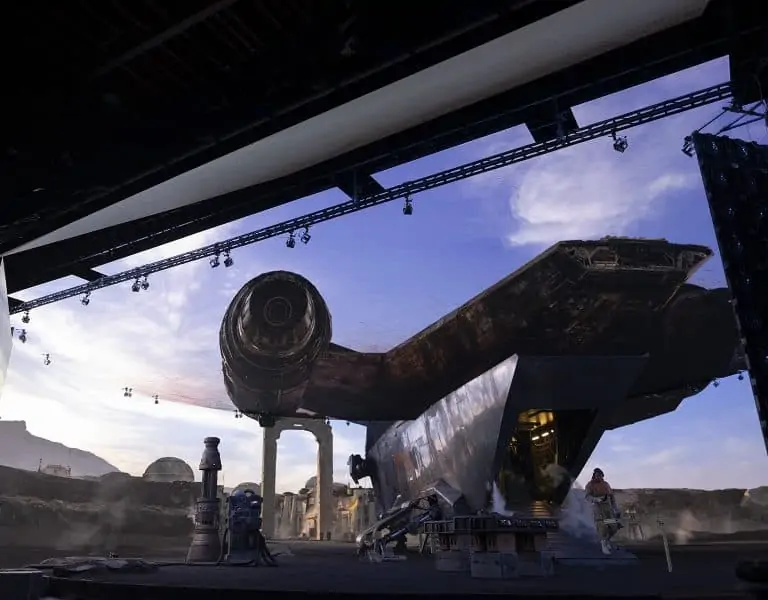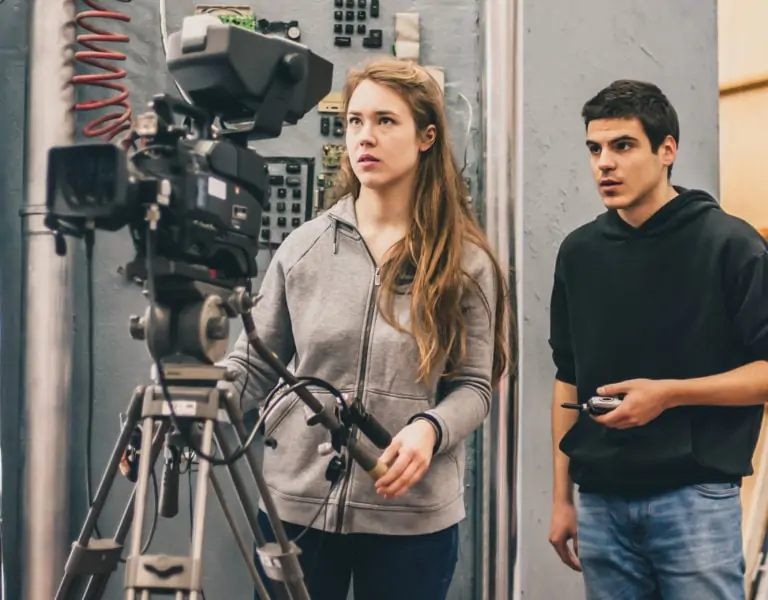AN INNOVATIVE ARTIST
With a lifelong passion for blending art and science, John Knoll, ILM executive creative director and senior VFX supervisor, has evolved the visual effects world and the craft of filmmaking.
Early in life, Industrial Light & Magic (ILM) executive creative director and senior VFX supervisor John Knoll (Pacific Rim) was exposed to the blending of art and science as his father was a Professor of Nuclear Engineering and Radiological Sciences at the University of Michigan as well as an accomplished amateur photographer and model builder. “My older brother Thomas and I both picked photography up as a hobby; that was one of the things which led me into the film industry and to the creation of Photoshop.”
A sci-fi classic by Stanley Kubrick left a lasting impression. “2001: A Space Odyssey was probably my number one influence as a kid because the imagery was so striking and real,” says Knoll, who used to read back issues of American Cinematographer to learn how visual effects shots were created. “I started to experiment and try to do it myself.”
The industrious attitude paid off while attending film school at the University of Southern California. “I built a motion-control system that I used to shoot my final project.” Knoll collaborated with his brother Thomas to produce an influential raster graphics editor. “The fundamental idea of Photoshop was a Pixar Image Computer but with a MacPaint Macintosh interface.”
Another innovation was the Knoll Light Factory which was born out of the need to create a lens flare effect for Tinkerbell in Hook. “Probably half of the 100 shots of Tinkerbell in the movie were done with the synthetic lens flare generator that I wrote,” he says.


An iconic visual effect is the alien water tentacle that has the ability to replicate human faces in The Abyss. “I was already a big fan of James Cameron before I got to work with him,” recalls Knoll. “In my mind Aliens is the best action movie ever made. Working with him on The Abyss was a joy. Cameron has a sharp head, good ideas, knew exactly what he wanted, could describe it in great detail and was consistent about it.”
Included among Knoll’s six Academy Award-nominations is an Oscar for Pirates of the Caribbean: Dead Man’s Chest. “It was decided that Bill Nighy should be on set playing the role of Davy Jones, so we’d get all of the benefits of that. Hal Hickel [ILM animation supervisor] and I got talking about that as a challenge and brought it to the R&D department. That’s what led to the iMocap system which was a big part of making Davy Jones and his crew so successful.”
A proud moment was the release of Rogue One: A Star Wars Story which revolves around the theft of the plans for the Death Star and was based on a story idea by Knoll. An important part of the aesthetic was replicating how the models were constructed for the original Star Wars. “We went through a process of getting a whole bunch of the original model kits that were used to build all of the ships and built digital versions of them, so the modellers were working in the same way.” The late Peter Cushing was digitally resurrected as Grand Moff Tarkin. “We had the blessing of Peter Cushing’s estate. I felt that we were using this character in a way that was respectful and Peter Cushing would have liked if he were around to play the role.”

When it comes to cinematographers, Knoll admires John Alcott BSC (A Clockwork Orange) who frequently collaborated with Stanley Kubrick, and in particular, Dariusz Wolski ASC (News of the World), and Greig Fraser ASC ACS (Lion). “I spent a lot of time on set talking with Dariusz trying to wrap my head around how he thought about lighting scenes and what his approaches were because I knew that when I was in post, I was going to have to mimic his style for things that he couldn’t be involved in. One of Greig’s rules of thumb that I liked a lot was if you add a light to a scene and flip it on and off, and you’re not sure if you made it better then leave it off.”
According to Knoll, the key to being a good visual effects supervisor is getting into the head of the director to try to understand their point of view and taste because “you’re going to have to be their agent when they’re absent”. He also believes it is important to be a good communicator and a student of nature.


The impetus behind virtual production is something to be excited about. “I delight in those cases where you can take an old technique and can continue practicing it but with a newer technology,” he says. “The LED volumes on The Mandalorian are like what we used to do with rear projection and Translights but a lot better.”
Perfection does not necessarily make for a believable image. “You are making a piece of artwork so there are various measures of technical success but there is artistic success as well and knowing how to craft an image that draws your eye to the right place and communicates the right story,” observes Knoll. “It’s a skill that takes a while to acquire. It is a privilege to be part of the team at ILM for 36 years. There has been a lot of innovation at the company by a lot of smart and creative people. The proudest thing that I could say is I feel like that I belong in that group.”










